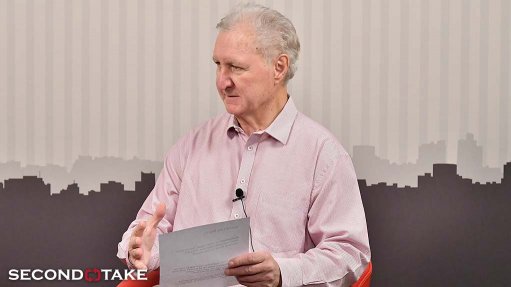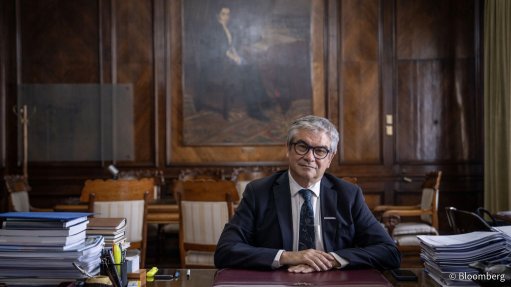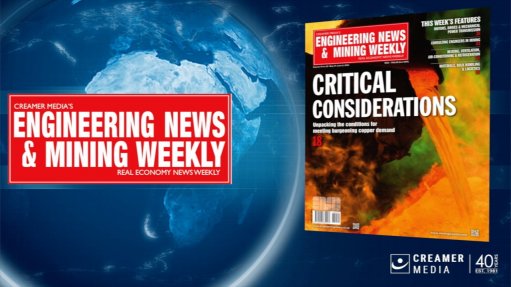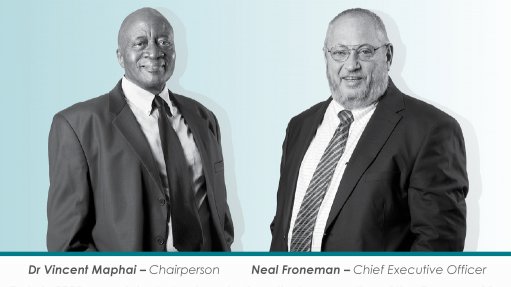Greater man/machine collaboration needed as AI, automation evolve – Cawood
In the new world of digitised and automated mining that is headed towards increased dependence on AI to solve problems and facilitate complex processes, University of the Witwatersrand (Wits) School of Mining Engineering Professor Fred Cawood has warned against an overreliance on such technologies without human checks and balances in place.
“If you find yourself in a space where you can't perform a certain activity, you will have to get the experts to help you because we can get it seriously wrong with automation if we do not understand the risks involved. So, thou shalt not automate that which thou cannot do thyself,” he said at the Mind Shift conference hosted by Mine Equipment Manufacturers of South Africa, in Sandton, on May 16.
Cawood contextualised this caution against a backdrop of increasingly ubiquitous incorporation of AI and automation throughout the industry, where digital technologies were now being seen as partners instead of mere tools.
“We better start preparing for robots in the workplace. You better start learning how to work with them. Collaboration between humans and machines is no longer avoidable,” he said, calling to mind Harvard Business Review’s term for such systems not being robots but “auto-sapiens”.
Cawood described the evolution of mine modernisation through the growth of digital technology, starting with sensors that have allowed for the collection of precise data to facilitate better decision-making, enable remote monitoring and predictive maintenance, and enhance safety.
As technology evolved, the development of digital twins became possible, with predictive algorithms that allow engineers and mine managers to effectively “see the future”, he said.
“It raises us to a point of operation of wisdom once we start introducing tools like this,” Cawood commented, noting that the mining industry would soon be at a stage where “auto-sapiens” would tell mining companies what to do, and that decisions would be automated on the back of robust analytics that dictate what must happen next.
“At this stage, it is no longer a recommendation. We can optimise value because we have digital twins, we can optimise value over the entire mining lifecycle,” he said.
However, Cawood noted that the mining industry had not reached this stage just yet.
“In order to get to be ready for this phase, we need to start thinking of key performance indicator (KPI) alignment. What is the job of a digital assistant or a robot and what is the job of a human? Here you have your company strategy to deal with, so it's a strategic issue.
“And we also have the law, the Mine Health and Safety Act, and other Acts that we need to comply with, to consider. We need to know what are the KPIs of humans and machines; we need to understand the world of work and responsibilities, who can make what decisions; and then we need to do the competence development,” Cawood suggested.
He said the ramp-up of AI and other digital technologies in mining created what he called the “man/machine conundrum”, with humans and machines starting to compete for control.
“The sector has embraced technology in a grand way. I would argue that the mining sector is hooked on technology. We want more. We want more stuff and we want it today. However, we need to appreciate that every time we bring in a new technology, we change the world of work that we are operating in,” he said.
He said the insertion of automation into traditionally human-led tasks could create teething problems as new skills needed to be developed to allow for collaborative man/machine operation.
“We need to analyse if what the machine says makes sense. Is it true? Can we trust the machine? How do we make a decision? How do we question the machine’s recommendations?” Cawood mused.
He said automation would currently work best in environments where it was too dangerous for humans to operate.
“What we need to do is we need to start collaborating. We need to start knowing how to work with machines and robots, or auto-sapiens, in the workplace. We need to develop the skills for this new world of work,” Cawood said.
He said the next step was to decide on the kind of AI that would define the world of work, and then consider the policy implications of their adoption.
“We need to invest in the language models and decide on the data sources, because it's not just a matter of grabbing data. Remember, lives are at stake in some of these decisions. We cannot just feed any information to our digital assistant. We need to follow a structured process to make sure that the information inside these digital assistants is good, checked, and accurate,” Cawood said.
He said it was crucial to implement proper engineering because the intended users of the systems would not necessarily be highly qualified people.
“We need to limit our risks. Make sure that the information is accurate. The security and privacy issues, we need to address those, and then monitor the performance. We want the technology to work. If it doesn’t work, lives are at stake. And for that, we need to ensure the data accuracy. Therefore, don't automate what you can't do yourself,” he reiterated.
Comments
Press Office
Announcements
What's On
Subscribe to improve your user experience...
Option 1 (equivalent of R125 a month):
Receive a weekly copy of Creamer Media's Engineering News & Mining Weekly magazine
(print copy for those in South Africa and e-magazine for those outside of South Africa)
Receive daily email newsletters
Access to full search results
Access archive of magazine back copies
Access to Projects in Progress
Access to ONE Research Report of your choice in PDF format
Option 2 (equivalent of R375 a month):
All benefits from Option 1
PLUS
Access to Creamer Media's Research Channel Africa for ALL Research Reports, in PDF format, on various industrial and mining sectors
including Electricity; Water; Energy Transition; Hydrogen; Roads, Rail and Ports; Coal; Gold; Platinum; Battery Metals; etc.
Already a subscriber?
Forgotten your password?
Receive weekly copy of Creamer Media's Engineering News & Mining Weekly magazine (print copy for those in South Africa and e-magazine for those outside of South Africa)
➕
Recieve daily email newsletters
➕
Access to full search results
➕
Access archive of magazine back copies
➕
Access to Projects in Progress
➕
Access to ONE Research Report of your choice in PDF format
RESEARCH CHANNEL AFRICA
R4500 (equivalent of R375 a month)
SUBSCRIBEAll benefits from Option 1
➕
Access to Creamer Media's Research Channel Africa for ALL Research Reports on various industrial and mining sectors, in PDF format, including on:
Electricity
➕
Water
➕
Energy Transition
➕
Hydrogen
➕
Roads, Rail and Ports
➕
Coal
➕
Gold
➕
Platinum
➕
Battery Metals
➕
etc.
Receive all benefits from Option 1 or Option 2 delivered to numerous people at your company
➕
Multiple User names and Passwords for simultaneous log-ins
➕
Intranet integration access to all in your organisation





















